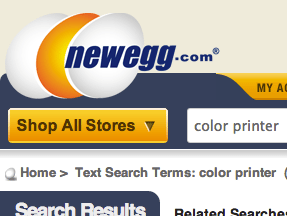In marketing, “lift” represents an increase in sales in response to some form of advertising or promotion. Monitoring, measuring, and optimizing lift may help a business grow more quickly.
It is important to understand how any form of marketing is impacting a business. While lift is not the only thing that a marketer should pay attention to, it does relate closely to a company’s financial success. Lift, like any metric, should be measured in context of the particular type of campaign in view and in the context of business goals.
While every organization should develop or at least optimize lift measurements that make sense for its own situation or goals, there are some basic lift-monitoring strategies for each of the most common forms of online ecommerce marketing.
Ongoing Campaigns
Many Internet retailers — especially new ones — depend on a steady stream of pay-per-click driven traffic for sales and profit. When an online store first opens, few, if any, customers know that it exists and likely even Google and Bing have not indexed the site. So it makes perfect sense that marketers at a new online store would turn to PPC, which can be very effective.
Even established retailers will use PPC to get new customers. But new customers, however important, are almost never as profitable as returning or repeat shoppers. Earlier this year Adobe reported that in the United States returning or repeat shoppers account for about 41 percent of retail revenue online, but represent just 8 percent of site traffic.
Put another way, Adobe found that shoppers who come back and make a second purchase typically spend three times as much as new customers. Repeat shoppers, those that come back more than twice, will typically spend 5 times as much as new shoppers on each purchase, according to Adobe.
With this data in mind, the ultimate goal of a PPC campaign should not only be to make immediate sales, but to introduce shoppers to a store with the hope of making lasting customer relationships.
A retailer in the northwest, as an example, used a PPC campaign to sell a $10 item to a shopper in Florida, introducing that shopper to the store and its products. Now that shopper spends no less than $500 per quarter with the store.
To measure the lift from an ongoing marketing campaign — such as PPC ads — a merchant may want to look at the overall growth in sales from month to month. Assuming that the amount invested in the ongoing campaign is steady over time, the merchant should see a monthly lift in sales.
Imagine that a merchant has sales of about $1,000 per month. This merchant initiates an ongoing PPC advertising campaign, investing $500 per month. In the first month, total sales grow to $2,000. Assuming that no other promotions were going on, that merchant should attribute the $1,000 lift in sales to the PPC campaign. It would also be worthwhile to look at the lift in profits after promotional expenses are considered.
Regular Discounts
Many online retailers also offer regular discounts. These discounts may include a free shipping offer with or without a minimum purchase; a discount for senior citizens or members of a group like AAA, AARP, or similar; or a discount for returning shoppers.
Like the ongoing advertising campaigns described above, regular or longstanding discounts are often used to create lasting and loyal customer relationships.
To measure the lift from regular discounts, consider looking at three areas: (a) increase in total sales from month to month, (b) the average order size for shoppers using the discount compared to shoppers who did not; and (c) the ratio of repeat customers to new customers who take advantage of the regular discount.
Event Promotions
Event or one-time promotion may include things like Cyber Monday sales, Christmas sales, or even contests conducted on Facebook. They are marketing promotions that happen at a single timeframe.
Frequently marketers are aiming at boosting short-term sales or garnering new customers or registrants when they use this sort of marketing.
To measure the lift from an event promotion, compare like timeframes. For example, if an online merchant has a Cyber Monday sale running, lift could be measured by comparing the total sales on Cyber Monday with the average sales for the days before and after the sale.
Specifically, imagine that an online merchant makes $10,000 in sales on Cyber Monday. That same merchant averaged $8,000 in sales for the five days before the sale and averaged $7,500 for the five days after. Next, the merchant could average the averages, if you will, adding $8,000 to $7,500 and dividing by two. The result, $7,750, represents sales over time. When this amount is subtracted from the Cyber Monday sales of $10,000, the merchant has the lift for the event, which in the example is $2,250. The merchant should, of course, also look at profits for the same periods.
Content Marketing
Not every kind of marketing is meant to have an immediate impact on sales. Content marketing is a slow process, wherein a site offers useful or entertaining content and thereby increases organic site traffic.
The slow nature of content marketing can make it seemingly more difficult to measure, but finding lift for content marketing is no different than finding lift for an ongoing campaign like PPC ads.
In both cases there is a monthly investment in marketing, and a measuring amount of sales. To find lift from content marketing, look for a month-over-month rise in sales from natural or organic traffic. Also look for an increase in direct referrers — the number of shoppers that type in a store’s specific URL rather than accessing the store through a third-party like a search engine.




